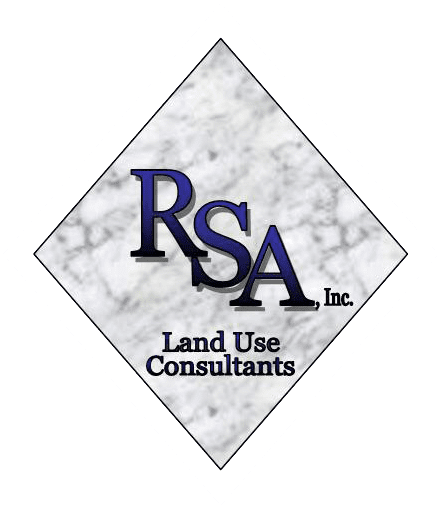One of the most crucial steps in embarking on a new development project is conducting a land use feasibility study. This comprehensive analysis assesses factors like zoning regulations, environmental impact, and market demand, helping to determine whether the project is viable. However, as developers and investors dig deeper into these studies, they often uncover hidden costs that can significantly affect the project’s budget and timeline. Here, we explore some of the most common hidden costs uncovered during a land use feasibility study.
 8 Hidden Costs Uncovered with a Land Use Feasibility Study
8 Hidden Costs Uncovered with a Land Use Feasibility Study
1. Environmental Remediation
One of the most significant and often unexpected costs comes from environmental issues. If the land has a history of industrial use or contains hazardous materials, developers may be required to undertake costly environmental remediation. This process can involve removing hazardous materials, decontaminating soil, or addressing groundwater pollution. The costs associated with environmental remediation can be substantial and may require specialized contractors, making it one of the most significant hidden expenses in land development.
2. Utility Upgrades and Extensions
Utilities are essential for any development but can also be a significant hidden cost. A land use feasibility study might reveal that existing utilities—such as water, sewer, gas, or electricity—cannot support the proposed development or are not available at all. Extending these services to your site can be expensive and time-consuming, especially if the site is in a remote or underserved area. Even in more developed areas, upgrading aging infrastructure to meet the demands of your project can quickly add up, impacting the project’s overall feasibility.
3. Regulatory Compliance and Permits
Navigating the maze of zoning regulations, permits, and compliance requirements is another area where hidden costs can emerge. A feasibility study might uncover that the land is not zoned for the intended use, resulting in a costly and time-consuming rezoning process. You may also discover the need for special permits, variances, or compliance with new or evolving regulations. The costs of securing these permits, conducting additional studies, or even redesigning the project to meet regulatory requirements can quickly add up. These regulatory hurdles can also cause delays, leading to additional costs.
4. Access and Transportation Infrastructure
Access to your site is crucial, but ensuring it is up to standard can be costly. A feasibility study may uncover the need for new or improved roads, traffic signals, or even the construction of bridges or tunnels. This situation often requires developers to acquire additional land or negotiate easements with neighboring property owners. Additionally, if your project is large, local authorities may require traffic impact studies and mitigation measures, which can further increase costs. These infrastructure improvements are often necessary to gain approval for the project but can be expensive and time-consuming to implement.
5. Soil and Geotechnical Issues
The physical characteristics of the land can also present hidden costs. A geotechnical analysis as part of your feasibility study might reveal issues with the soil, such as instability, poor soil composition, high water tables, or unstable ground. These conditions may require additional engineering solutions, like deep foundations, retaining walls, or extensive grading work, all of which can significantly increase your costs.
6. Community Opposition and Public Relations
Public opinion can have a significant impact on your project’s success. A feasibility study might reveal that the local community is opposed to your development, which can lead to delays, additional costs for public relations efforts, or even legal battles. Addressing community concerns often requires more than just public meetings; it may involve redesigning aspects of the project, conducting additional studies, or making concessions to win approval.
7. Cultural and Historic Preservation
If the land has historical significance or contains cultural artifacts, developers may be required to conduct archaeological surveys and preserve any findings. This process can delay the project and introduce additional costs for compliance with preservation laws. In some cases, developers might need to alter their plans or provide compensation for the disturbance of cultural resources, further increasing costs.
8. Mitigation Measures for Environmental Impact
Environmental impact assessments are a standard part of most feasibility studies, and they often uncover the need for mitigation measures. This could include preserving wetlands, creating wildlife corridors, or implementing measures to reduce the development’s carbon footprint. While these efforts are essential for sustainable development, they can add to the project’s overall cost. Additionally, securing environmental permits and conducting ongoing monitoring can further strain the budget.
Prepare for Potential Surprises with Richard Stevens & Associates
A land use feasibility study is an indispensable tool for identifying potential issues that could affect your development project. However, as we’ve seen, they can also uncover a range of hidden expenses that can significantly impact a project’s financial viability. Whether it’s environmental remediation, utility upgrades, or regulatory compliance, knowing these hidden costs can save you from unexpected financial strain and keep your project on track.
Our team at Richard Stevens & Associates can conduct a thorough feasibility study. As your local experts on land use planning, we’ll prepare a planning project proposal that includes an estimate of the costs and fees required to bring your project to fruition. Contact us today to get started.

 8 Hidden Costs Uncovered with a Land Use Feasibility Study
8 Hidden Costs Uncovered with a Land Use Feasibility Study